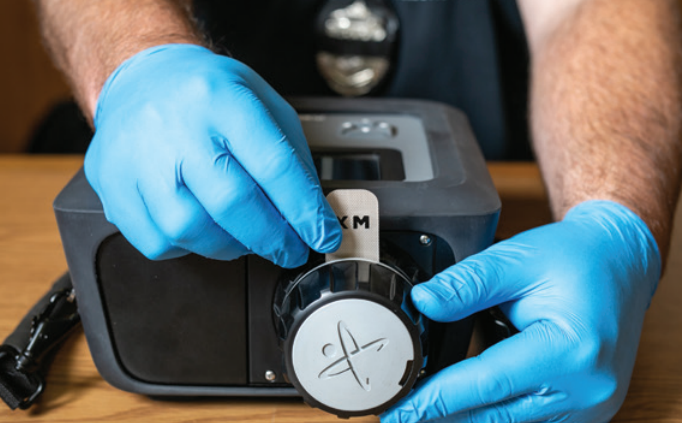A Blueprint for Response
The U.S. White House Office of National Drug Control Policy (ONDCP) issued its drug policy priorities in April, which provides a valuable blueprint for law enforcement agents, border control agents, and others who confront the escalating threat of illicit drug use and trafficking. The policy agenda sets the tone for a coordinated, national response. With synthetic opioids, especially fentanyl driving record-high overdose deaths, the message is clear: modern, field-based detection tools are no longer optional. They’re essential.

DEA campaigns like “One Pill Can Kill” are vital for raising awareness.
The Office of National Drug Control Policy – 2025 Priorities
This updated national policy narrative focuses on reducing overdose fatalities through increased access to naloxone and emergency medical services, prevention through education and youth engagement, and encourages the expansion of evidence-based treatment for those struggling with addiction. However, it goes beyond a focus on vital health and safety initiatives. The ONDCP 2025 priorities align law enforcement with its goals to target international drug trafficking networks, while also strengthening border control at home to stop drugs from entering U.S. communities through innovation in data, research, and field-based detection technologies.
Additionally, it begins to open conversations and efforts around precursor chemical detection. The inclusion of precursors in this policy is important as drug cartels have not only become adept in smuggling illegal drugs, but also in importing the chemicals used to manufacture them. While precursors aren’t the centerpiece of the policy, the nod to the issue empowers entities to prepare for future regulations that may demand more robust detection capabilities to monitor precursors.
The latest ONDCP statement directly responds to the evolving complexity and intensity of the synthetic drug trade, and what we can expect the executive branch to base future policy on. While these are technically recommendations and the policy itself does not carry the force of the law, it signals to those who are directly involved how we will work toward combating the current drug crisis.
The Current State of Illicit Drug Activity

Overdose deaths, driven in large part by illegally produced fentanyl and its analogs, are currently at concerning levels. Manufacturers of these drugs continue to adapt new ways of trafficking synthetic opioids across borders and are become increasingly creative in disguising counterfeit pills as legitimate medications, making it even harder to detect dangerous illicit drugs on the streets. Drug trafficking across U.S. borders remains a prominent source of drugs entering the country, with U.S. Customs and Border Control seizing the most fentanyl than ever before in 2023 and 2024. And within the last year the U.S. Drug Enforcement Administration (DEA) seized the equivalent of more than 377 million lethal doses of fentanyl across the country, and current numbers are upwards of 81 million lethal doses.
Given our nationwide crisis, the ONDCP’s timing makes it clear that law enforcement, public health officials, and frontline responders need better tools and a stronger framework to respond to the entire supply chain and remove these drugs from American communities.
Detection Technology is No Longer Optional – It’s Essential
Illicit drug interdiction, border enforcement, and field detection are central pillars of the ONDCP strategy and directly align with 908 Devices’ mission and technologies like the MX908 handheld device.
Law enforcement needs tools that are fast, portable, and trusted to stop the spread of counterfeit pills that contain trace amounts of lethal illicit drugs, such as fentanyl and emerging, more potent drugs such as nitazenes. A recent survey confirms that Americans are on board, with 63% of respondents indicating they strongly support equipping law enforcement officers with advanced chemical detection tools to identify drugs in the streets. Frontline drug detection supports drug prevention efforts at every level.
The pillars outlined in the recent strategy are important for detection efforts but also signify a renewed backing and promise to the public in terms of safety priorities. DEA campaigns like “One Pill Can Kill” and “Speak Up, Step Out, Fight Back” are vital for raising awareness, particularly among young adults.
Overall, this ONDCP framework demonstrates renewed commitment to tackling the synthetic drug crisis, making it a nationwide imperative. This isn’t just a public health emergency, but a very real frontline security threat.
At 908 Devices, we’re proud to stand with those on the front lines and will continue to enable rapid, reliable, and actionable chemical analysis where it matters most.
